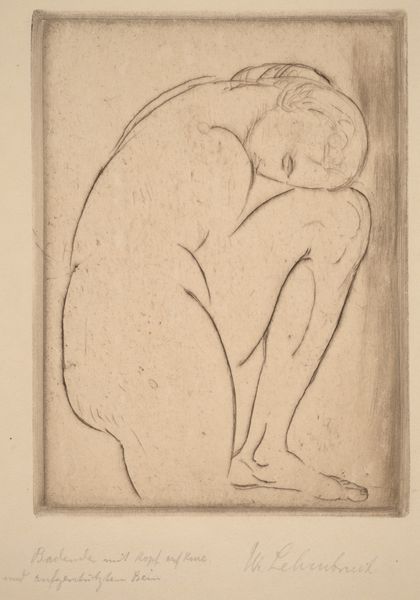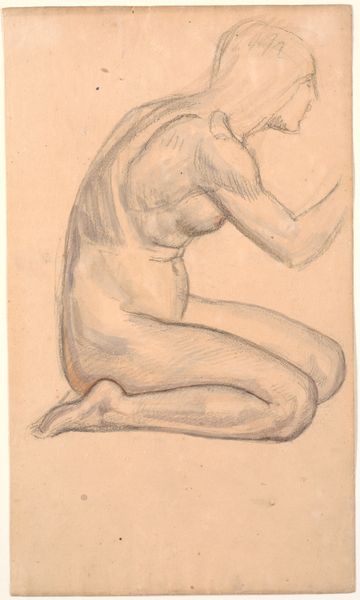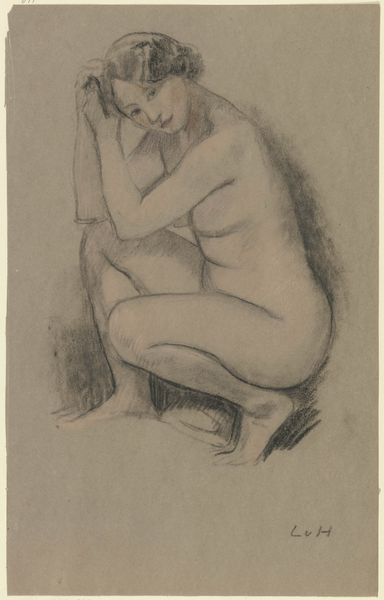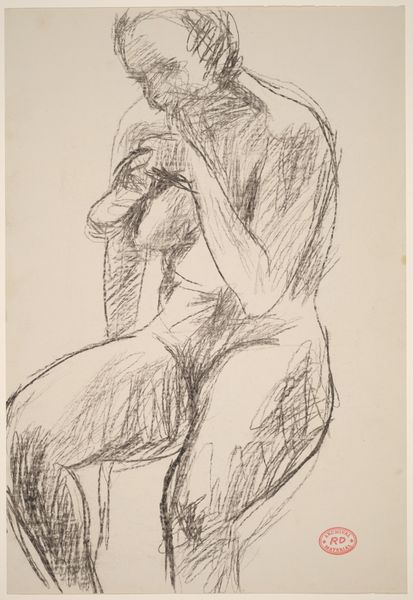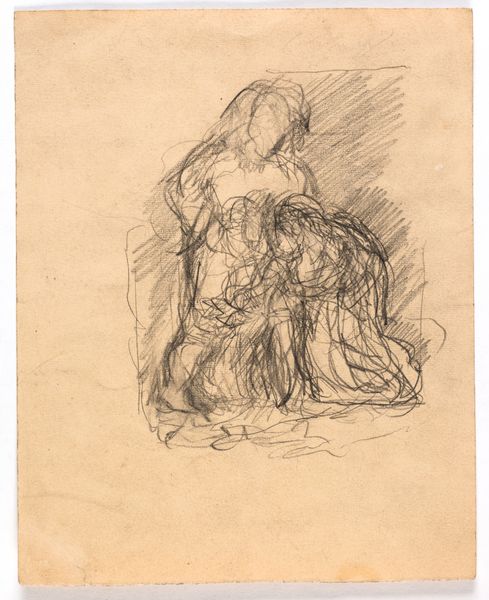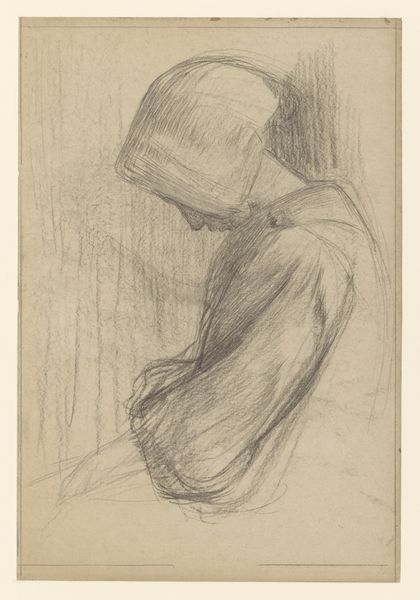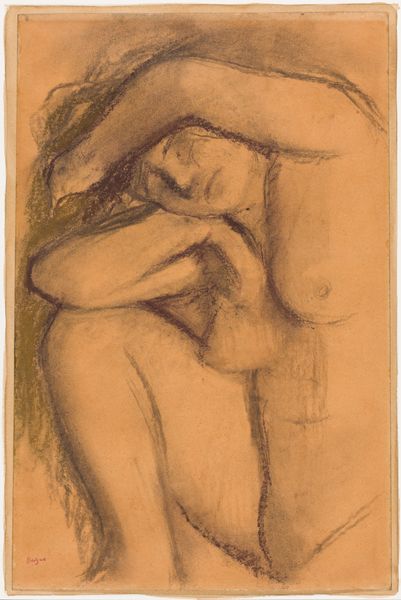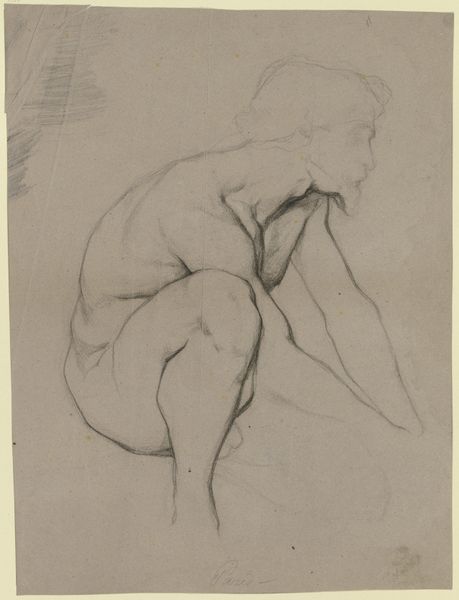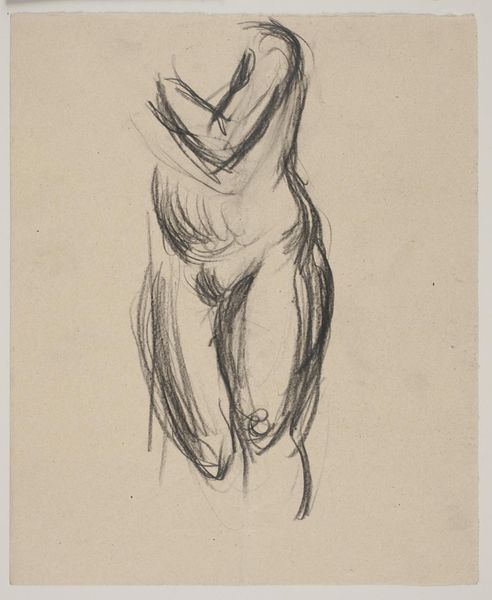
drawing, print, etching, intaglio
#
pencil drawn
#
drawing
# print
#
pen sketch
#
etching
#
intaglio
#
pencil sketch
#
german-expressionism
#
figuration
#
expressionism
#
nude
Copyright: National Gallery of Art: CC0 1.0
Curator: Wilhelm Lehmbruck’s intaglio print, "The Dead Man," created in 1915, presents us with a powerful depiction of the human form and condition. Editor: Woah, heavy stuff! My first thought? It's a somber dance. Look at the entwined figures. It's all very intimate, even in death. Like, are they comforting each other? Curator: Absolutely, the intimacy speaks to a shared humanity. Lehmbruck, situated within German Expressionism, often explored themes of alienation, loss, and the psychological impact of war. Given that 1915 marks the height of WWI, this piece resonates deeply with the historical trauma of the era. The positioning, too, reminds one of classic pieta images, echoing the universal grief caused by loss. Editor: I get that, the context, but stripped back, for me it's also the simple line work. All those scratchy little marks – they add to the feeling of vulnerability, like skin flayed raw. Does that make sense? Like a charcoal rubbing of my soul? Curator: Precisely! The roughness of the etched lines heightens the emotional intensity and discomfort, a classic expressionist approach. But also it should be considered the historical interpretation – after the loss of many in war there may be many bodies lying entwined as these two are rendered here. What does it mean that there's implied vulnerability of nude figuration within that dynamic? Editor: Hmm, okay, interesting angle. For me the lack of strong definition makes it universal... genderless even? So it becomes just 'humanity' embracing death. It almost feels spiritual in its own raw way. And yet I guess, what is the line between erasing sexuality to make the rendering universal and simply furthering masculine standards of idealized proportions that render woman as not the standard model of what it is to be human? Curator: A critical reading allows us to understand those nuances. As a male artist working within a specific historical context, the gaze through which he represents these bodies reflects power dynamics inherent in his time, and perhaps he, unintentionally or otherwise, perpetuates it even when hoping for an egalitarian universal symbol. Editor: So, looking at this then... it’s heavy, but with a strange comfort hidden within it. Death as a sort of difficult merging... Curator: Yes, it embodies an era's anxieties but provides space for us to question, reassess and, I suppose, ultimately reconsider universalizing tendencies when viewing intimate works such as this one.
Comments
No comments
Be the first to comment and join the conversation on the ultimate creative platform.

